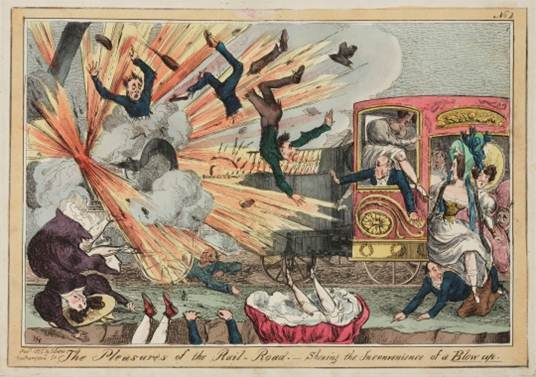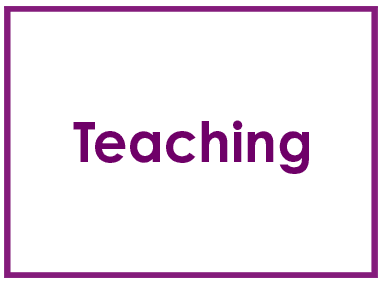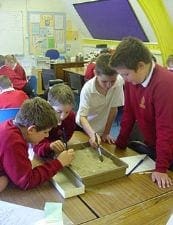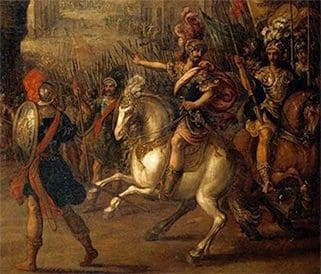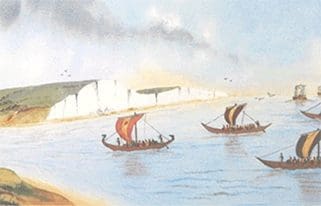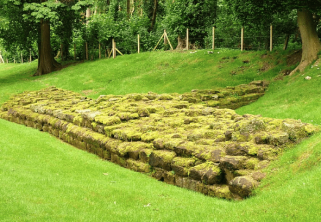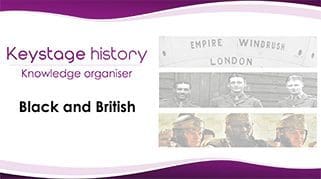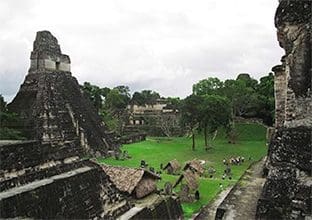
This new topic is perhaps one of the most demanding in the Key Stage 2 curriculum. Admittedly Benin and Maya civilizations have appeared before in earlier manifestations of the history national curriculum, but they never found favour with the publishers and resources were always hard to come by. Whatever the attractions of teaching these topics, so much seemed to be left to teachers working on their own to find suitable materials. Even the most enthusiastic champions of these periods of history found themselves returning to the tried and tested Aztecs and Egyptians as their non-western society. Now of course, in answer to the critics who said the curriculum was too Anglo-centric, pupils can do both an ancient civilization and one from five hundred to a thousand years ago.
In this section I hope to showcase planning and outstanding lessons from all three civilizations as well as leading you to the growing resource base which is bound to hit the market soon.
Why should I choose Benin?
- A recent UK census showed that more than 5% of Londoners were of black African descent.
- There are some great artefacts, the Benin bronzes for pupils to study: intriguing objects of international importance
- It is a wonderful example of an African society producing superb works of art that those who discovered them thought must have been from Ancient Egypt. The idea that Africa could be producing the quality of sculpture usually associated with renaissance Europe serves as a wonderful counterweight to the cultural chauvinism shown in the west.
- The story of Africa’s relationship with Europe is an important one for pupils to know. 5. The trajectory of this unit enables pupils to look at European actions through African eyes, thereby building their empathetic understanding.
What sort of key questions might I use to structure my work on Benin?
- KQ1 What sort of place was Benin 1,000 years ago and how do we know? Introduction to the nature of sources, especially oral testimony and artefacts
- KQ2 When was Benin at the height of its power? A collaborative living graph to show the ups and downs of the civilization over time.
- KQ3 What changes took place when the European settlers started trading? Case study of one of the Benin bronzes.
- KQ4 Soap, Margarine and tyres: Why did the British get involved in Benin and what were the effects for the Benin people?
- KQ5 Should the British have taken these valuable and sacred objects and put them in museums? A class debate followed by letter to British Museum arguing for the return
BBC website resource link: http://www.bbc.co.uk/schools/primaryhistory/worldhistory/benin_bronze/
Why I should choose Islam
- With Muslims representing around a quarter of the global population-some 1.4 billion people, Islam is a powerful force in today’s world.
- Islam has, in its 1400 year history had an immense influence around the globe.
- For a period Baghdad was the intellectual capital of the world. One of the classical features of this Gold Age that is the focus of study was its tolerance.
- Taught well, this study could help combat some Islamophobic attitudes.
- There are some great cross-curricular links, and not just with RE. Several key mathematical terms e.g. algebra have their origins in Arabic terms, and there is lots to explore in terms of knowledge of the human body.
Here are a sample of the key questions you might want to use for planning plus an indication of the types of lesson activities that will soon feature on the site. Subscribers can have full access to material in development. Just email for draft copies.
- KQ1. How did the world of the Middle East change during the life of the Prophet Muhammad? Activity : A publisher wants a colourful and clear double page spread to show before and after view. Pupils produce a diagrammatic representation on a double page spread
- KQ2 Why did Islam spread so rapidly in the seventh century when other empires did?Activity: You are a Byzantine spy, who has visited the court of the caliph at Medina. You have to report back why Umar was a particularly successful leader?
- KQ3 What can we learn about Islam from the way they set up the capital at Baghdad? e.g. how a new capital city was established by the caliphs in Baghdad, how the layout of the city gives us information about early Islamic civilisation about daily life in Baghdad. Activity : pupils to provide a guide to merchants wishing to travel to the fabulously wealthy city of Baghdad during its heyday in the eighth century.
- KQ4 In its Golden Age, ten times more people lived in Baghdad than in London. So what was so special about it? Pupils are given a gallery of images showing scenes from life in Baghdad which they have to explore and then summarise the qualities that made it special.
- KQ5 How did Arab Muslims contribute to the world of mathematics and science? Activity : Mantle of the Expert : pupils work out which words we use in mathematics have Arab origins and then produce notes of guidance for secondary-school mathematics and science teachers explaining the importance of Islam in the origins of their subject
- KQ6 What can we learn from the art and architecture of Islam? Activity : Pupils visit a gallery of 20 images you have set up, with captions. Pupils have to prepare a PowerPoint display in which they use only 6 images that best show the key features of art and architecture. But which will they chose and why?
Why I should choose the Maya
- The civilization is unique and pupils genuinely feel they are learning something completely new. It is on the curriculum because it is an interesting society in its own right: not just because it was part of the story western European expansion. This encourages pupils to ask interesting questions e.g. why has the Mayan calendar got only 260 days when ours has 365?
- The central belief epitomised in the God of maize raises interesting creation myths which link to pupils work in RE. Learning about another cultural system, one where there is human sacrifice demands great maturity if pupils are to accord the practice dignity and respect. As such it is a good Y5/6 counter-weight to a study of Egypt in Y3/4.
- Some of their artistic work is phenomenal.
- Pupils can make links to work on Ancient Egypt e.g. stepped pyramids.
- It is an interesting opportunity to raise ethical issues. If the Maya worship the God of Maize how can they reconcile this to genetically modified crops or biofuel in their cars? 6. You can do some great cross-curricular work with Maths as the Maya has base 20 rather than base 10.

